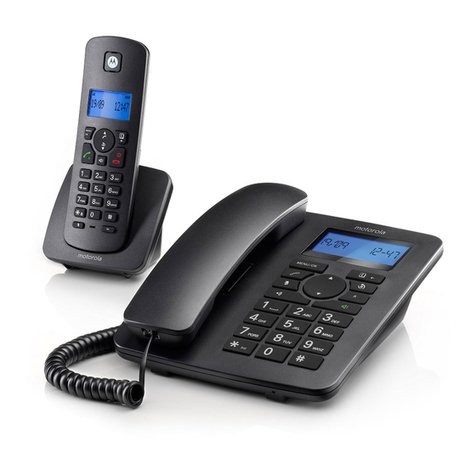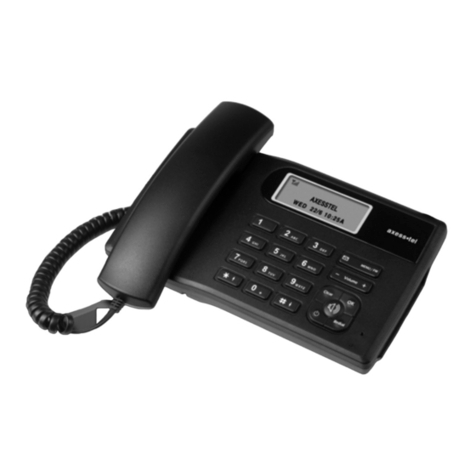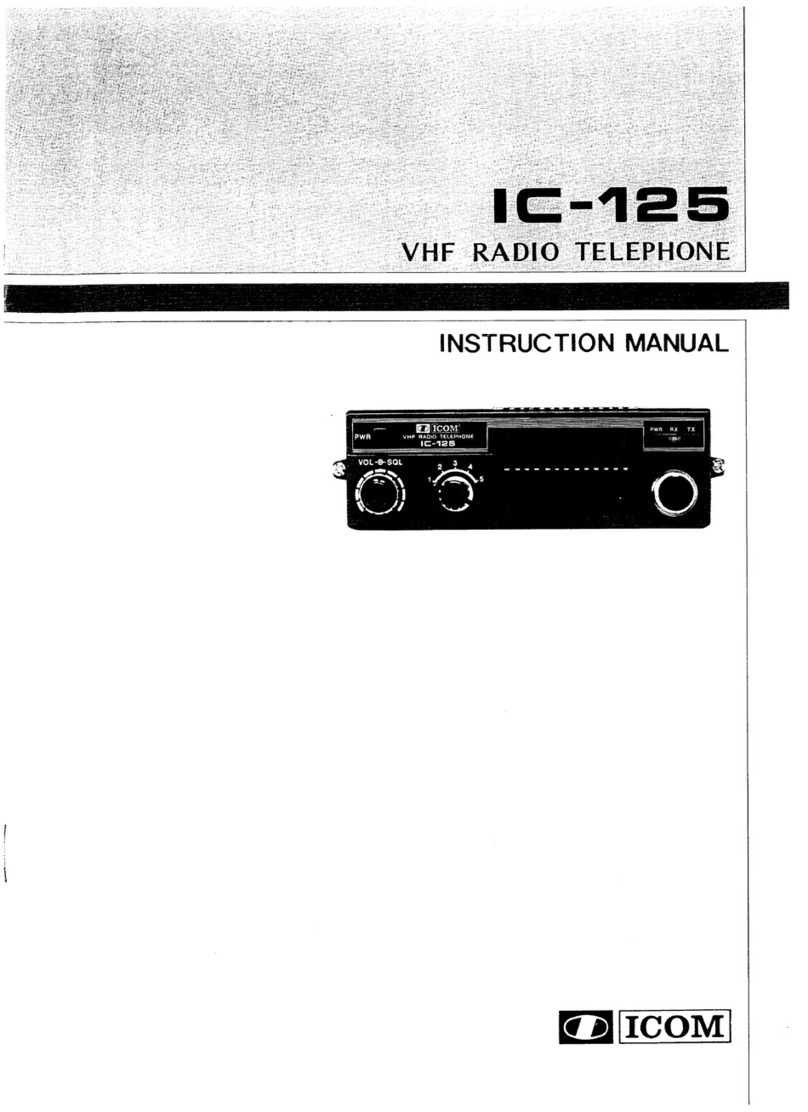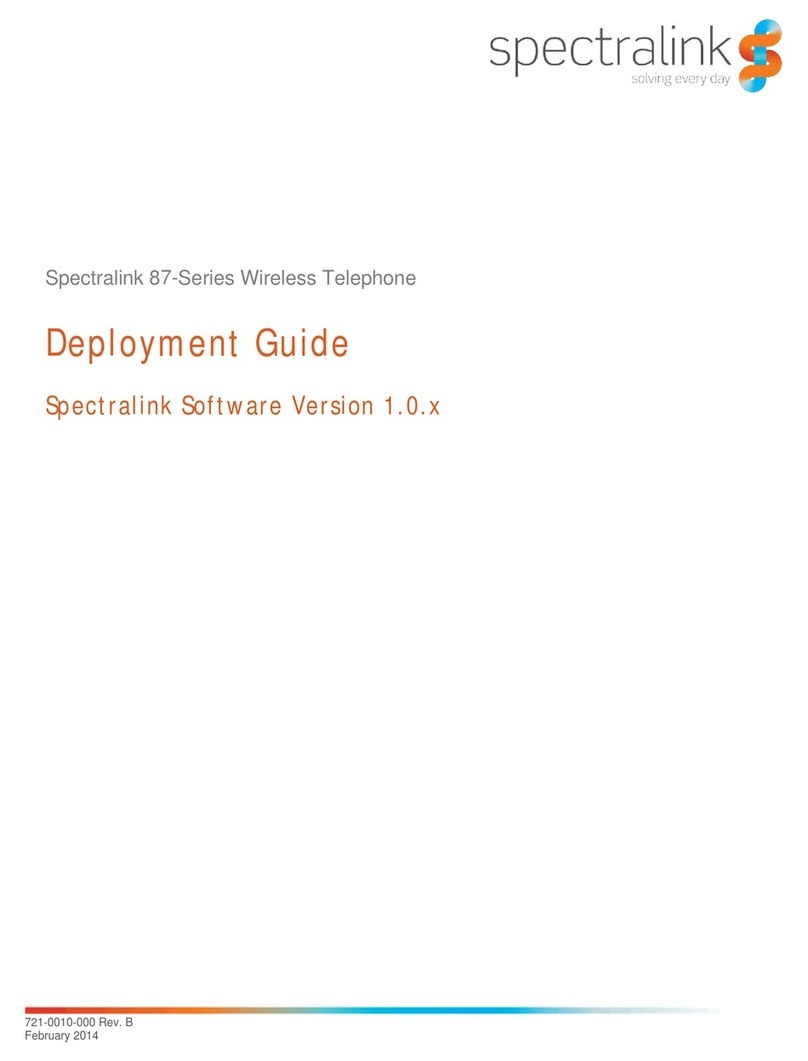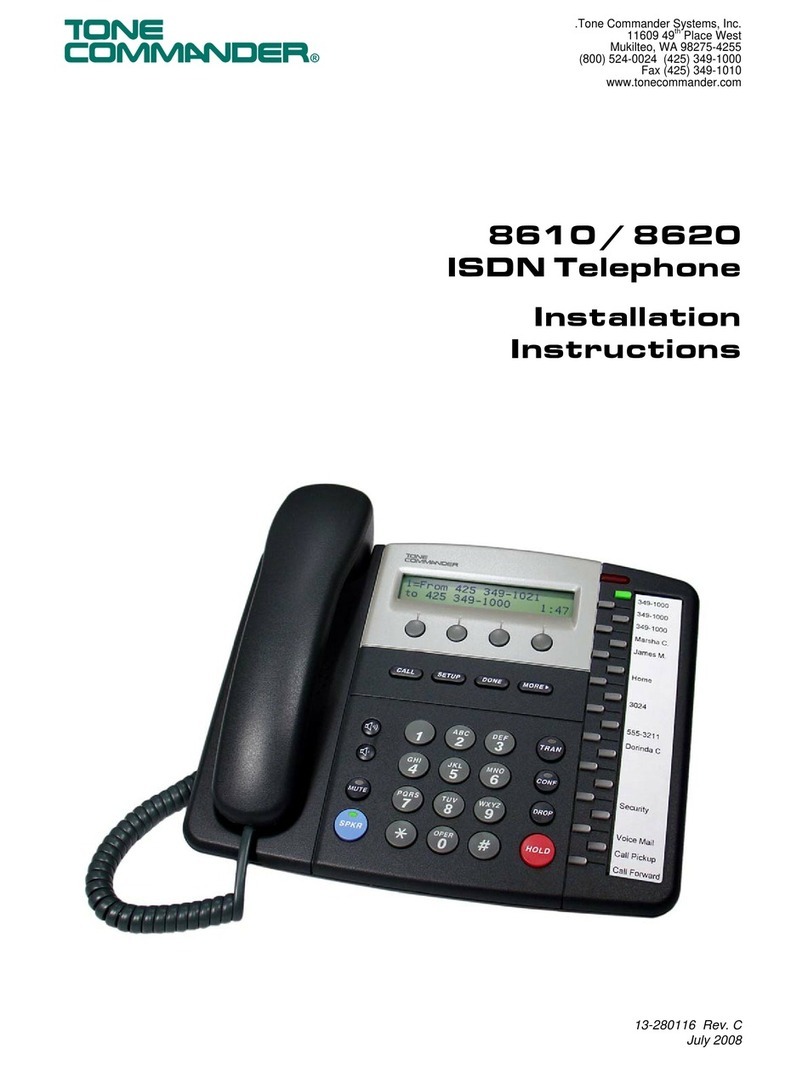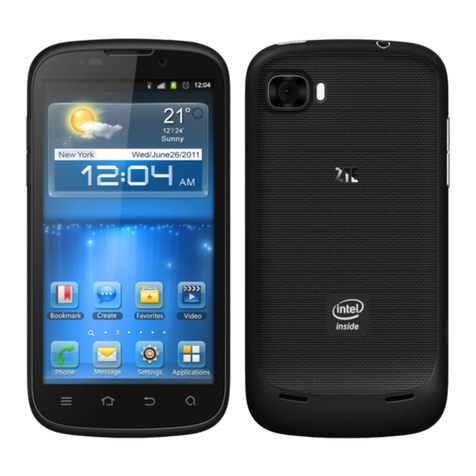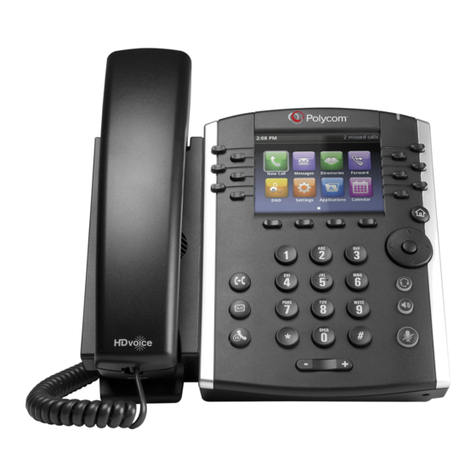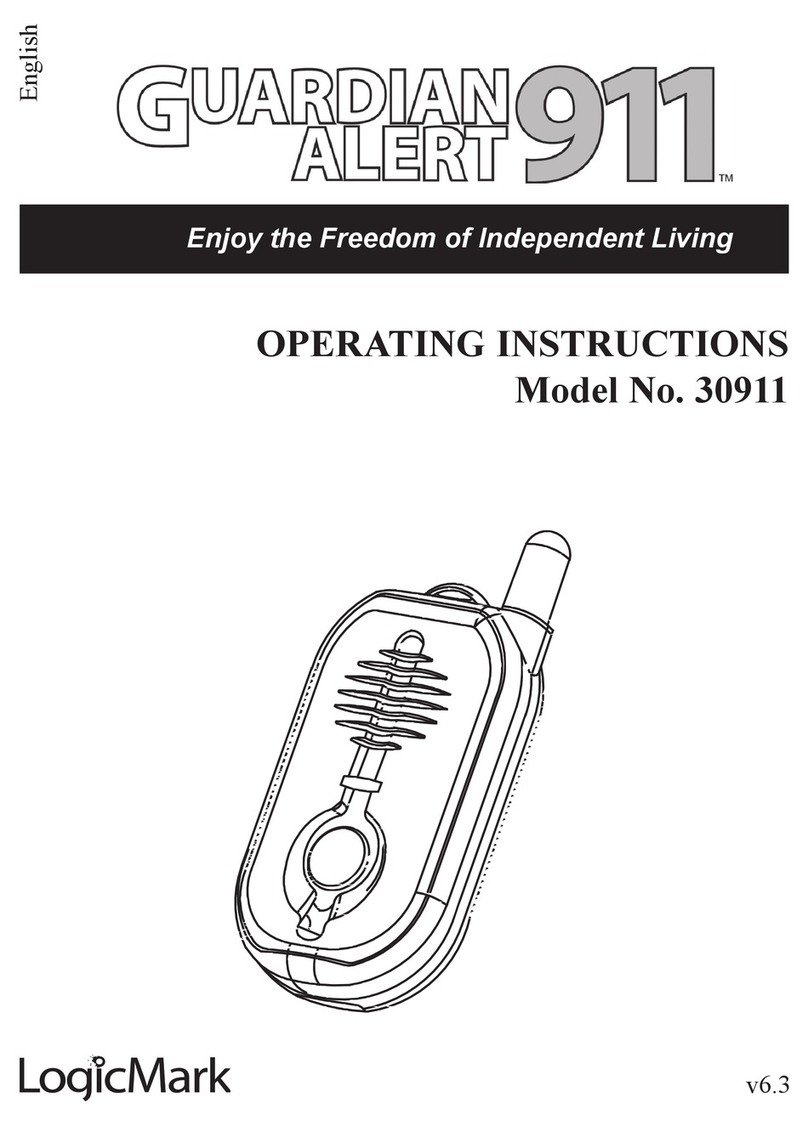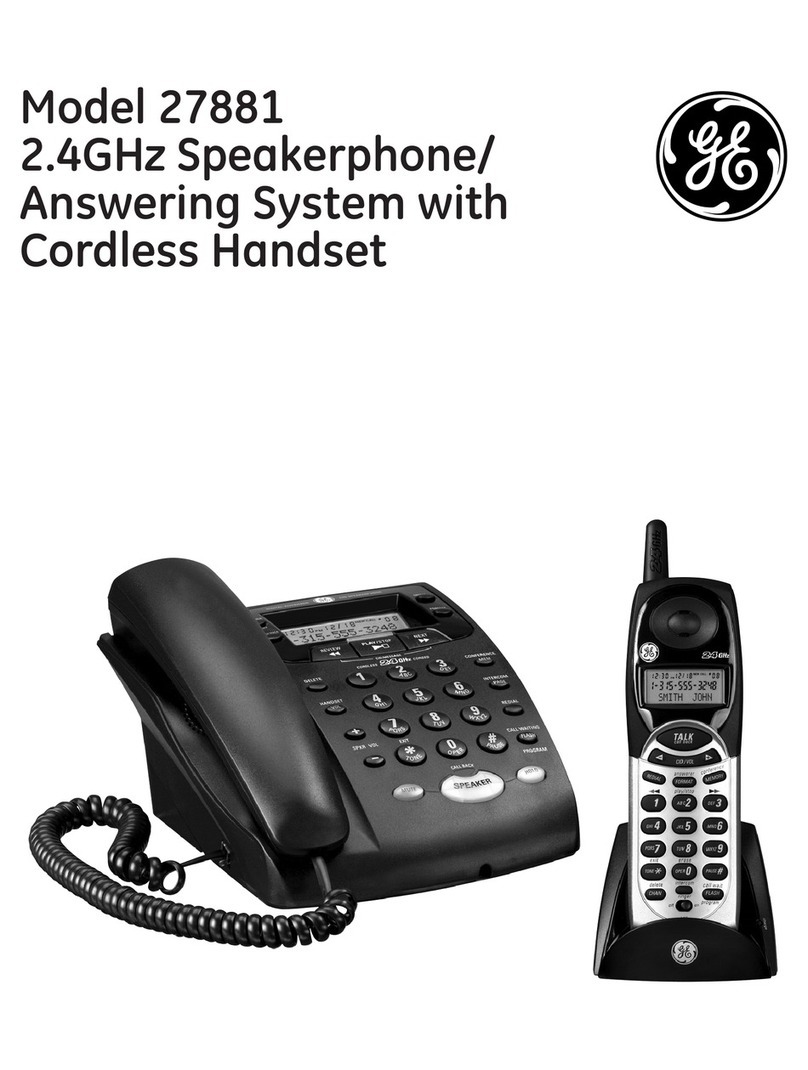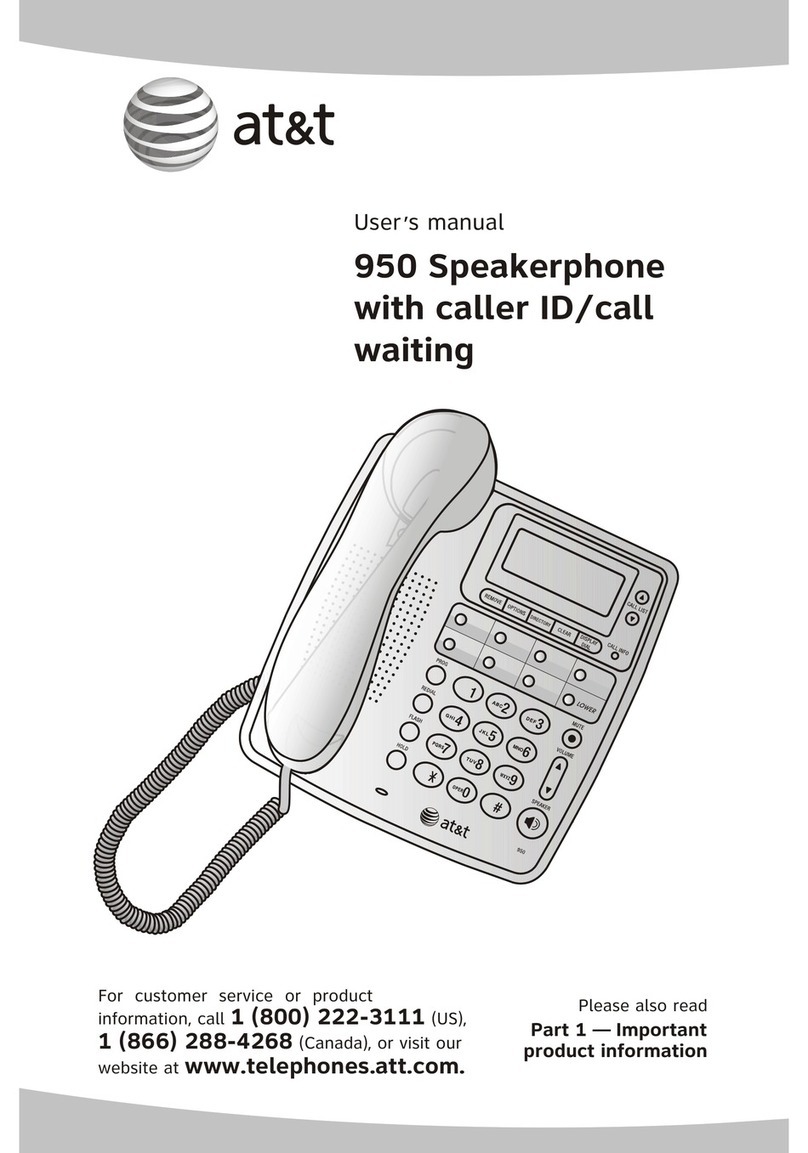GINEERS M-BUS Series User manual

3. Electrical connections
All the connectors of an MBLM-2 are at the back of the device and are shown on the figure on
the right:
1 – Power inlet: adapter 9 Vac/150 mA or 12
Vdc/150 mA (polarity does not matter)
2 – DB9M - RS-232C for connection to PC
(master modem)
3 – RJ45 – RS-232C for connection to m-bus converter (slave modem)
4 – RJ11 – to the telephone line
The power supply should be connected last.
4. Warranty
The warranty of the device is limited to 2 years from the date of sale. If the device shows any
defect or malfunctions during that period, the manufacturer is obligated to repair the device in its own
service for manufacturer’s expense, or, if the repair is impossible, to replace the device with new one.
The transportation costs to the manufacturer’s service are due to the client. The warranty voids if this
manual’ instructions are not met, warranty seals are removed or the device was opened by unauthorized
by the manufacturer personnel.
Serial number:.................... Date of sale:........................
Signature:................................
5. The package contains
-MBLM-2 - 1 pc.
-Instruction manual - 1 pc.
-Configuration utility CD – 1 pc.
-Data cable DB9 F-F 1-3 m – 1 pc.
-Data cable RJ45 straight 1 m – 1 pc.
6. Manufacturer
Gineers Ltd.
7 “Iskarsko shausse” blvd, TCE, building 4
1528 Sofia, Bulgaria
tel./fax (+359-2) 9758105
URL: http://www.gineers.com
e-mail: office@gineers.com
Phone line MBLM-2 M-BUS Series
Instruction manual
MBLM-2 is a bidirectional V32.bis full-duplex phone line modem for use in remote reading
systems like M-bus. It has RS-232C interface for connection to the reading server (master modem) or
to a M-bus converter device (slave modem).
1. General technical data
- connection protocol – V.32 bis / V.22 / V.21
- connection speed – 300/1200/2400/4800/7200/9600/12000/14400 bps
- power supply – 9 Vac/150mA или 12 Vdc/150mA, adapter 2 mm
- max. power consumption @ 12Vdc – <0.4W (idle), <0.8W (online)
- serial port baud rate – 2400/4800/9600/19200/300 bps
- ambient temperature, operating – -20÷+50 °C
- ambient temperature, storage – -50÷+90 °C
- air humidity, operating & storage – 40÷90 %
- dimensions (L/W/H) – 125/70/30 mm
- protection class – IP30
- display – 4 LEDs (on, link, comm /local communication/, line
/remote communication/)
- weight – 160 g
2. MBLM-2 operation
MBLM-2 is powered by external adapter 9 Vac/150 mA or 12 Vdc/150mA. The central pin of the
power connector is 2mm thick. We recommend adapter with power rating 12 Vdc/2W. Power supply
voltage should not exceed 14 Vdc.
МBLM-2 begins operation immediately after power-up. After initialization (about 2s), MBLM-2
enters “Command mode” for master modem or “Incoming call waiting” for slave modem. The working
mode (master/slave) is determined by the state of the serial port’s RTS signal (pin 7). MBLM-2
recognizes the following commands *:
-info – returns information about MBLM-2 hardware and software version
-prm – returns information about all MBLM-2 programmable parameters values. It is also used
for programming any of these parameters.
-reset – restarts and re-initializes MBLM-2 (used after baud rate change)
-dial number – dials “number” and connects to the MBLM-2, connected to the phone line,
described with ‘number’. “Number” can contain only digits (0-9). Only tone dialing supported.
* - all commands may be lower or upper case. No other preceding or trailing characters allowed
(such as space, CR, LF, etc.)
Commands «info» and «prm» are valid also with slave modem, when sent by the master modem
through the telephone line. It enables the master modem (and the server software) to set remotely all
programmable parameters of the slave MBLM-2 and to check its version.
Connection to remote reading network by MBLM-2
For remote connection by telephone line to remote reading system it is needed that two
MBLM-2 are used. One of them is configured as master (reading server side) and the other is configured
as slave (remote network side). If our software is used, MBLM-2 is configured automatically as master
when connected to the PC. MBLM-2, connected to an m-bus converter type MBRS-xx is automatically
configured as slave. Both modems must be connected to the telephone line.
MBLM-2’s serial ports configuration (baud rate and parity control - programmable parameters
CPB and CPP) depends on their mode – master or slave. The master communicates with the server PC

and its baud rate and parity control may be set by the customer from 300 to 19200 bps with none, even
or odd parity. The slave communicates with the remote reading network, so its port configuration must
match the configuration of the devices to be read (for m-bus systems it is usually 2400 bps, even
parity). All modems default serial port configuration is set to 19200 bps with odd parity, thus in order to
read the remote devices properly, the master must issue commands to the slave to configure its serial
port according to the requirements of the remote network. Slave modems can also be programmed
locally through their serial ports with appropriate software. After changing the serial port configuration
of the master it is needed that “reset” command is issued to MBLM-2 in order to accept the new baud
rate and/or parity. Slave modem (programmed through the telephone line) changes the settings
immediately.
For connection to the remote network the server issues the command “dial number” to the
master modem, and “number” is the number of the telephone line of the slave modem. Slave modem
does not recognize this command. If the phone line of the master modem is used or disconnected,
MBLM-2 master returns message “Phone line busy/disconnected” and stops executing the command.
When executing the command MBLM-2 master modem issues the following messages:
-“Connecting…” – starts command execution
-“Off Hook” – MBLM-2 engages the line
-“Dialing…” – MBLM-2 dials the number. If the number is incorrect (contains letters or other
not allowed symbols) MBLM-2 issues “Incorrect phone number” message, releases the line
and stops command execution.
-“Negotiating..” – after dialing MBLM-2 waits for slave modem response. If the pre-set timeout
(programmable parameter CET) expires without connection establishment, the master issues
“No response from remote modem” message, releases the line and stops command execution.
-“Connected” – connection between master and slave is established, MBLM-2 returns
connection speed (300-14400 bps – programmable parameter CSP), Signal/Noise ratio of the
line (very bad, bad, poor, normal, good, very good) and goes to data mode with the message
“Data mode”. If the connection speed is 300 bps, no SNR message is issued. If SNR is too
bad, the server may drop the connection with command “+++” and release the line, then to
reduce then maximum connection speed (parameter CSP) and to repeat the command.
The “LINK” LED starts blinking when “dial number” command is issued. It stops blinking after
connection establishment and starts lighting permanently. After connection expiry the “LINK” led goes
out.
After connection establishment every symbol sent to MBLM-2 through its serial port is
retransmitted to the remote modem by telephone line and vice-versa. If the communication stops for
longer than CTO parameter (30s default), the connection is automatically dropped, telephone line is
released and MBLM-2 goes back to command mode. The connection is dropped also when the line is
engaged for more than 10 minutes in order to prevent telephone line blocking when some software error
occurs at the server or network side. The server can drop the connection with the “+++” command (it
sends request for connection dropping to the slave), “++++” command (unconditional immediate
connection drop), or with waiting for more than CTO time with no communication.
Slave modem responds after preprogrammed number of rings (parameter ARN, default 3). After
connection establishment MBLM-2 retransmits every symbol from its serial ports to the master modem
and vice-versa. The connection can be dropped by CTO time expiry without communication, by receiving
“+++” command from the master or by engaging the line for more than 10 min.
Maximum connection speed between the two modems is determined by the programmable
parameter CSP. If the line is noisy, the modems can retrain and decrease the connection speed. V.32 bis
protocol is used for the connection if the maximum speed is set higher than 2400 bps (parameter CSP=3
to 8, i.e. 4800 bps up to 14400 bps). V.22 protocol is used if the maximum speed is set to 1200 or 2400
bps (CSP=1 or 2). V.21 protocol is used when maximum speed is set to 300 bps (CSP=0). Since these
three protocols are not compatible, if the connection speeds set on both connecting modems mean using
different connection protocols, connection could not be established. So in order to establish connection
successfully it is needed that both of the modems are set up with maximum speed over 4800 bps,
1200/2400 bps or 300 bps. It is recommended that the default setting (14400 bps) is used for the
parameter CSP.
Programmable parameters
The programmable parameters of MBLM-2 v1.20 are as follows:
– DDT – Time for single digit dial
– DDP – Pause time between digits when dialing
– CTO – connection timeout without communication
– CЕT – connection establishment timeout
– CМT – modem message end timeout
– CSP – maximum connection speed
– RXG – receiver gain of the modem
– ТXG – transmitter gain of the modem
– ARN – number of rings before slave modem engages the line
– OHT – time between engaging the line by the master and dialing the number
– OHA – time between engaging the line by the slave and sending signal
– CPB – serial port baud rate
– CPP – serial port parity
– MET – serial port message end timeout
Changing parameter value
With the <prm xxx=n> command the value ot parameter “xxx” is changed to “n”. After
successful change MBLM-2 responds with “Done!”. If the command is wrong (either the parameter is not
supported or the value is off limits) MBLM-2 responds with “Bad command”. The local parameters can be
changed only when MBLM-2 is in command modem (connection is not established). When connection is
established, the parameters read, set and changed are these of the remote modem.
All time parameters are defined with 10ms (0.01 s) increment. Thus time parameter with
value 100 will mean time 1s.
The values of the programmable parameters are as follows in the table:
Accepted at# Des. Description Default
value Value
limits Master
(local programming)
Slave
(remote
programming)
1 DDT Dial Digit Timeout 12 (120ms) 10-100 Immediately -
2 DDP Dial Digit Pause 12 (120ms) 10-100 Immediately -
3 CTO Connection TimeOut 3000 (30s) 1000-6000 Immediately Immediately
4 CET Connection Establ. Timeout 4000 (40s) 1000-6000 Immediately Immediately
5 CMT Modem Message Timeout 100 (1s) 50-1000 Immediately Immediately
6 CSP Connection Speed 8 0-8
(0-V21; 1,2-V22; 3-
8-V32.bis)
Immediately Next connection
7 RXG RX Gain 8 1-8 Immediately Next connection
8 TXG TX Gain 8 1-8 Immediately Next connection
9 ARN Answer on Ring Number 3 1-5 Immediately Next connection
10 OHT Off-hook dial timeout 300 (3s) 100-1000 Immediately -
11 OHA Off-hook answer timeout 200 (2s) 50-1000 Immediately Next connection
12 CPB Comport Baudrate 4 1-5
(1-2400, 2-4800, 3-
9600, 4-19200, 5-
300 bps)
After reset Immediately
13 CPP Comport Parity 2 1-3
(1-None, 2-Odd, 3–
Even)
After reset Immediately
14 MET Message End Timeout 10 (100ms) 5-100 Immediately Immediately
This manual suits for next models
1
